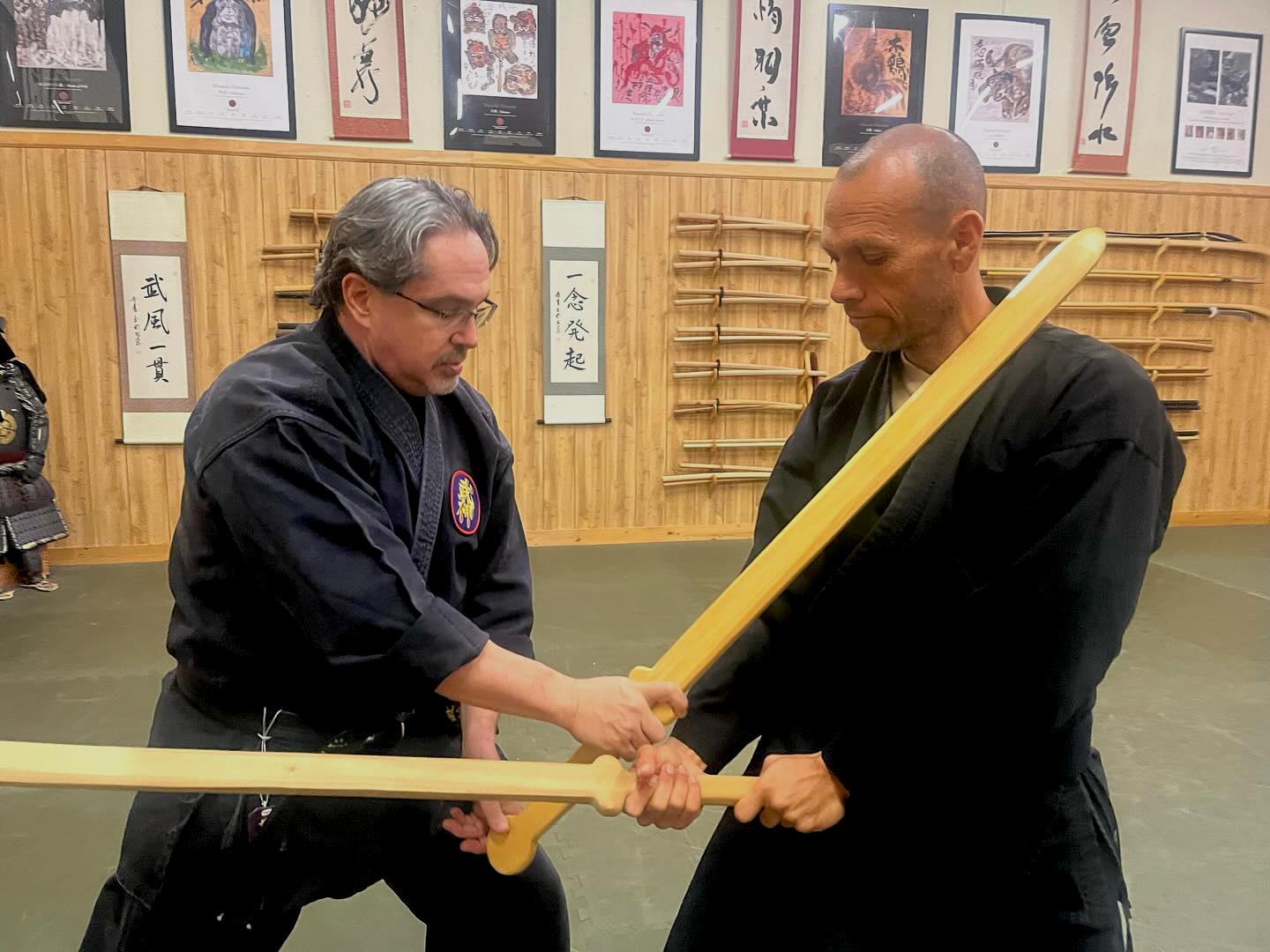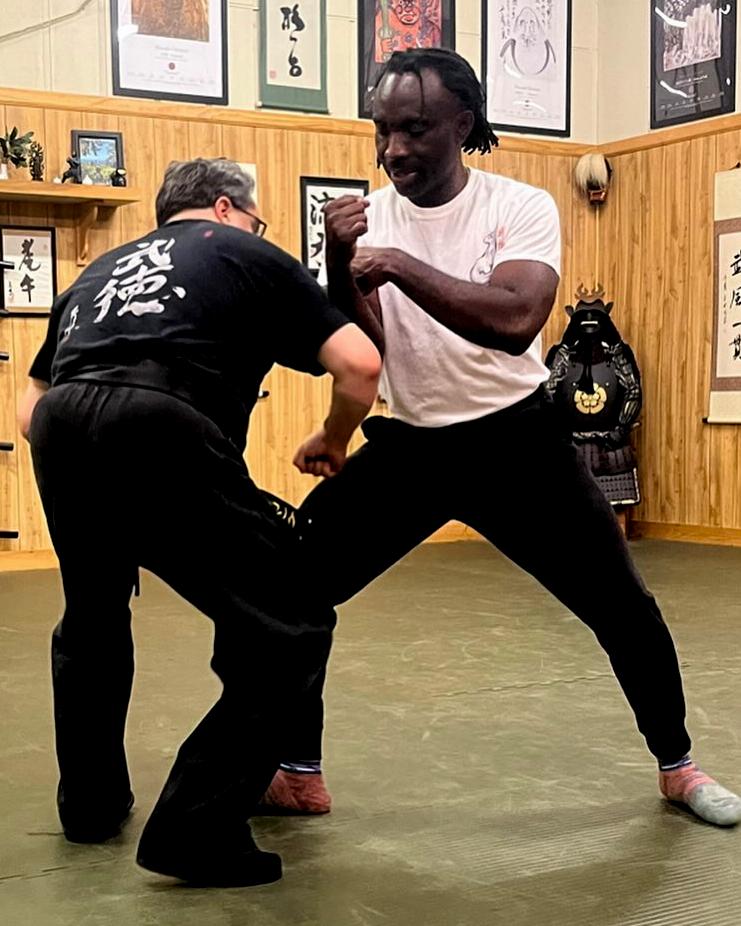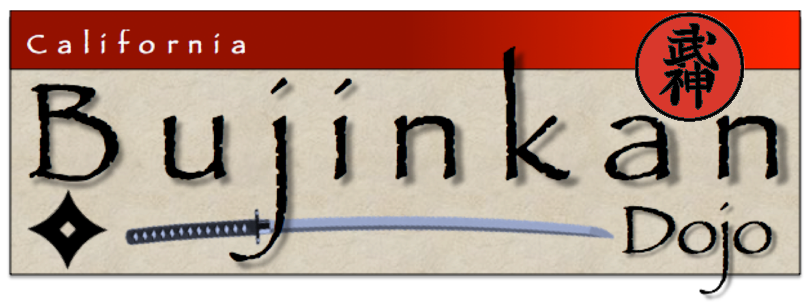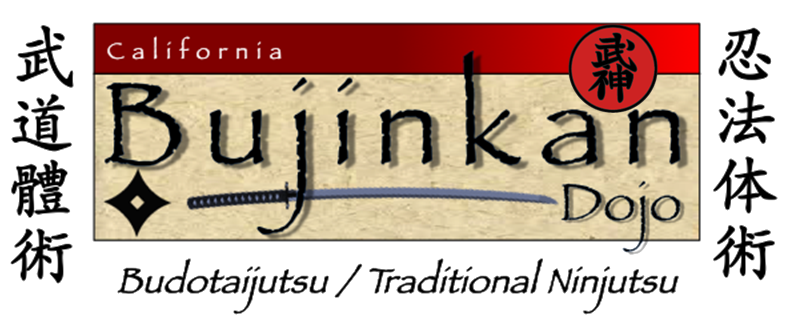California Bujinkan Dojo
Discover the Depths:
Explore the Diverse Martial Arts Styles of the Bujinkan Dojo
Dive into the rich variety of martial arts disciplines we practice, each offering unique techniques and philosophies that contribute to the comprehensive training at the California Bujinkan Dojo

The Bujinkan
What is Ninjutsu?
The name Ninjutsu is composed of two Japanese words: nin (忍), meaning perseverance or endurance; and jutsu (術), meaning art, skill, technique or craft. Ninjutsu is the art of persevering and enduring (surviving). Martial arts are studied for self-defense and self-improvement, but Ninjutsu is different from other martial arts in that practitioners seek to defend themselves by disabling an attacker as efficiently as possible.
The Bujinkan
What is BudōTaijutsu?
BudōTaijutsu, the unarmed combat art in the Bujinkan system, involves strikes, throws, holds, chokes, and joint locks. It includes dakentaijutsu (focusing on strikes, kicks, and blocks, subdivided into koppōjutsu for skeletal attacks and kosshijutsu for targeting muscles and weak points) and jūtaijutsu (the “relaxed body method” for throwing, grappling, and choking techniques)..

Key foundational techniques in early taijutsu training
The first levels of training, emphasize ukemi techniques such as leaping, tumbling, break fall techniques and body conditioning to form the basis for taijutsu. They are needed to progress into other techniques such as unarmed combat and the use of tools and weapons. Once learned, taijutsu techniques can be applied to any situation, armed or unarmed.
Ninjutsu vs. competitive sports: focus and evolution
Ninjutsu is not a sport. There are no competitive tournaments. Budōka train to better themselves without disparaging others; and as our primary concern is ethical protection, training is done in a manner that entails little risk of permanent injury. Ninjutsu is one of the oldest traditional Japanese martial arts, but its emphasis on adaptability has allowed it to evolve and adjust to modern times.

